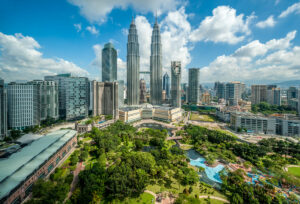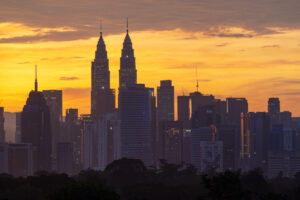Combining the benefits of rural and urban living, the garden city concept was created in the late 19th century to provide a sustainable approach to urban planning.
The growing issue of technological and infrastructural progress is gradually eroding the earth’s natural environment. As a result, eco-friendly solutions like garden cities have also grown in popularity.
Explore the concept of a garden city and its place in Malaysia. Continue to read the article to find out the features and unique benefits of garden cities.
What is a Garden City?
Initially introduced and promoted to the world by English town planner, Ebenezer Howard*, garden cities are designed as a solution to the declining quality of urban living.
Cities were becoming congested due to constant progress in infrastructure and technology, which eroded the surrounding natural landscape.
Garden cities, known also as ‘green cities’, are an ‘ideal’ approach to urban planning that Howard promoted in his renowned work, Tomorrow: A Peaceful Path to Social Reform (1898).
Howard geared his notion of a garden city towards being a small satellite residential community, combining amenities available in urban areas with easy access to nature.
The planning of a garden city hinged largely on being built in a cluster of other garden cities, as this would ensure efficiency and adequate resources are provided.
Garden Cities in Malaysia
As a tropical country featuring lush greenery, Malaysia has implemented the garden city concept to suit its local structures and prevent congestion in the city.
Among the most notable reproduction of this planning concept is Putrajaya, the administrative capital of Malaysia. It is known as an ‘intelligent garden city’, designed to portray the nation’s identity in nature, culture, and Islamic heritage.
Another instance is Kuching, Sarawak, its status as a garden city declared due to its abundance of natural beauty.
Read More: An Introduction to Malaysia’s Sustainable City
Features of a Garden City
Not only is it aesthetically pleasing to have urban designs coexisting beside our natural environment, but there are a few unique features that define a garden city:
Urbanity and Nature
The goal of a garden city is to harmonise the best that an urban residential area can offer with easy access to nature and its beauty in order to provide both modern necessities and a clean, green living space.
Greenbelt Barrier
In order to maintain this smaller area, greenbelts would surround a garden city to limit their growth. This is due to the goal of preventing congestion in the city.
Importance of a Garden City

In addition, we should also explore the benefits that this eco-friendly approach to urban development brings.
Better Health
Studies show that not only were garden cities safer and more prosperous, but that they were also healthier due to aspects such as improved air quality**.
Reduce Pollution
With their greater population of trees, garden cities are more efficient at removing pollutants like carbon dioxide. Their surrounding greenbelt also improves air quality.
Maintain Biodiversity
Since garden cities incorporate elements of nature, such as lakes, they also preserve surrounding natural habitats and wildlife, maintaining the area’s diverse ecosystem.
Read More: Town Planning and Urban Development in Malaysia
Striving Towards A Greener Future
As the world aims for continuous growth, particularly in regard to infrastructural development, it has become increasingly important to consider sustainable approaches.
Garden cities are an aesthetic and green solution to building cities that are efficient and comfortable, blending the beauty of nature with urban facilities.
At PEQ Consult, we deliver reliable town planning services through our integrated approaches to urban planning and management. Get in touch to find out more about our services and how we can contribute to a more sustainable future!













